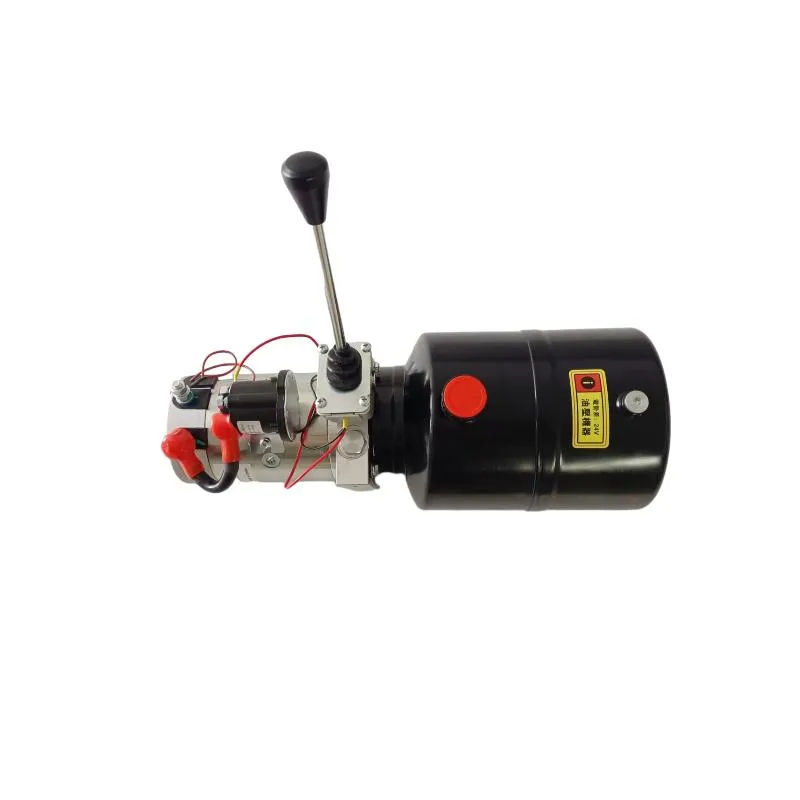Oct . 21, 2024 09:26 Back to list
Innovations in the Custom Hydraulic Cylinder Market for Enhanced Performance and Efficiency
The Custom Hydraulic Cylinder Industry Trends and Innovations
The custom hydraulic cylinder industry has seen significant growth in recent years, fueled by advancements in technology and an increasing demand for specialized hydraulic solutions across various sectors, including automotive, aerospace, construction, and manufacturing. Hydraulic cylinders are vital components in a range of machinery, providing the necessary force and motion to lift, push, pull, or press objects. Understanding the current trends and innovations in this industry offers insights into its future direction and the factors driving its development.
Rising Demand for Custom Solutions
One of the most prominent trends in the hydraulic cylinder industry is the growing demand for custom solutions. Standard cylinders may not meet the specific requirements of all applications, such as size, pressure rating, and stroke length. As industries continue to evolve, businesses are increasingly seeking tailored hydraulic cylinders that can optimize performance and efficiency. Custom hydraulic cylinders are specifically designed to meet precise engineering specifications, allowing for greater flexibility and adaptability in various machine designs.
For instance, the construction industry often requires hydraulic cylinders that can handle extreme loads and challenging environments. Custom solutions that incorporate advanced materials and coatings can enhance durability and resistance to wear, ensuring that equipment operates reliably under tough conditions. Similarly, in the aerospace sector, where weight and performance are critical, manufacturers are looking for lightweight yet powerful hydraulic cylinders that can be integrated into aircraft systems.
Technological Advancements
Technological innovations are also shaping the custom hydraulic cylinder industry. The integration of computer-aided design (CAD) and computer-aided manufacturing (CAM) technologies allows manufacturers to create complex custom designs with precision and efficiency. These tools enable engineers to simulate cylinder performance under various scenarios, optimizing designs for specific applications.
Additionally, the rise of additive manufacturing, or 3D printing, is revolutionizing the production of hydraulic cylinders. This technology enables the rapid prototyping of custom designs, reducing lead times and lowering costs. By using 3D printing, manufacturers can produce components with intricate geometries that would be difficult or impossible to achieve with traditional manufacturing methods. This capability not only enhances flexibility in design but also promotes innovation in creating lightweight, high-strength materials that improve overall performance.
custom hydraulic cylinder industry

Sustainability and Environmental Considerations
As industries worldwide become more environmentally conscious, the custom hydraulic cylinder industry is also adapting to sustainable practices. There is a growing emphasis on reducing energy consumption and minimizing environmental impact throughout the lifecycle of hydraulic systems. Manufacturers are investing in research to develop eco-friendly hydraulic fluids and materials that are less harmful to the environment.
Moreover, the push for improved energy efficiency in hydraulic systems has led to the development of advanced control technologies. These innovations allow for better monitoring and regulation of hydraulic operations, resulting in reduced energy waste. By creating systems that only use the necessary amount of hydraulic power for a given task, businesses can significantly decrease their operational costs and carbon footprints.
Challenges in the Industry
Despite the positive trends and advancements, the custom hydraulic cylinder industry faces several challenges. The need for compliance with stringent safety regulations can complicate the manufacturing process. Ensuring that custom designs meet quality and safety standards requires significant resources and expertise. Additionally, supply chain disruptions, which have become more pronounced in recent years, can impact the availability of materials and components, leading to delays and increased costs.
Moreover, attracting and retaining skilled labor is crucial for the industry’s growth. As technology evolves, there is a need for workers who are adept in both traditional manufacturing techniques and the latest innovations in hydraulic technology. Investing in training and development programs will be essential for nurturing the talent necessary to drive the industry forward.
Conclusion
The custom hydraulic cylinder industry is positioned for continued growth as demand for specialized solutions rises and technological advancements open new avenues for innovation. By focusing on custom designs, adopting sustainable practices, and addressing industry challenges head-on, businesses can enhance their competitiveness and meet the evolving needs of various sectors. As the industry adapts to these changes, it will play a critical role in the advancement of machinery and equipment that power the modern economy.
-
Fork Lift Power Units - Hebei Shenghan | Efficiency, Reliability
NewsJul.13,2025
-
1.5-Ton Turbocharged Cylinder-Hebei Shenghan|Hydraulic Solution,Energy Efficiency
NewsJul.13,2025
-
Auto Hoist Power Units-Hebei Shenghan|Efficiency&Industrial Lifting
NewsJul.13,2025
-
Double Acting Power Units-Hebei Shenghan|Hydraulic Solutions,Industrial Efficiency
NewsJul.13,2025
-
1.5 Ton Lifting Cylinder 70/82-40-290-535 - High-Performance Hydraulic Solution | Hebei Shenghan
NewsJul.13,2025
-
Fork Lift Power Units - Hebei Shenghan | Efficiency&Reliability
NewsJul.13,2025
